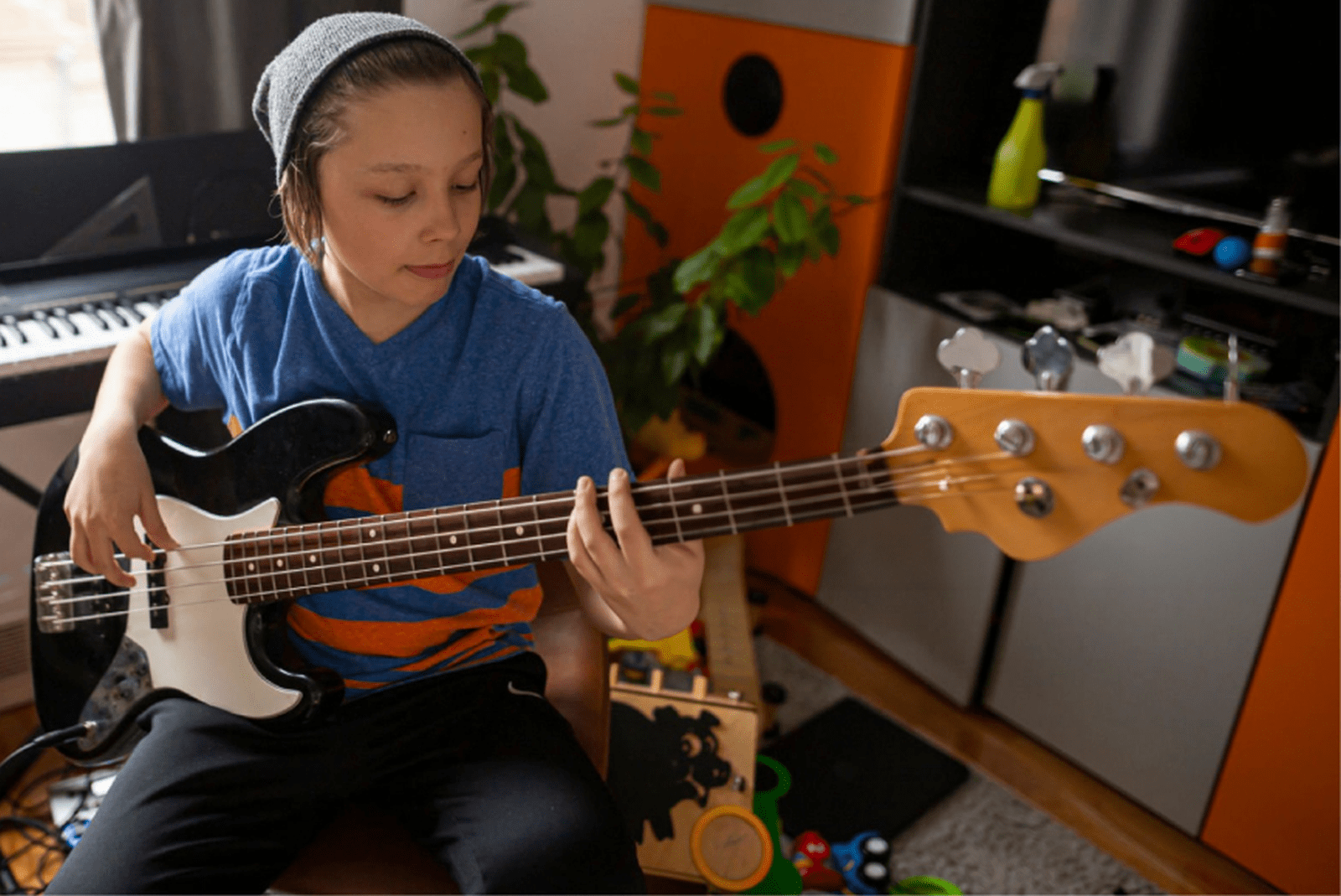The bass guitar is not just a backdrop for melodies and chords. In modern music, it plays a crucial role in establishing rhythm and groove, providing not only harmonic support but also a powerful rhythmic impulse. Let’s explore how the bass guitar contributes to rhythm and groove, and why it is so vital for a musical ensemble.
1. The Role of the Bass Guitar in Creating the Rhythmic Foundation
The bass guitar often serves as the rhythmic foundation in musical compositions. It connects the rhythm section (drums) with the harmonic section (guitars and keyboards), creating a unifying element that helps maintain a consistent rhythmic pulse. In the rhythm section, the bass works with the drums to keep a steady beat, allowing other instruments to move in harmony.
2. Shaping the Groove
Groove refers to the sense of rhythmic pulsation and movement in music that makes listeners want to move or dance. The bass guitar plays a key role in creating this effect. By using techniques like slap and pop, fingerstyle, and tremolo, the bassist can create intricate and rich rhythmic patterns that give the music its distinctive groove. These techniques help to emphasize and enhance the rhythmic feel, making the music more lively and dynamic.
3. Varying Rhythmic Patterns
Bass guitarists can use different rhythmic patterns and variations to create an interesting and layered rhythmic landscape. Changing note durations, using syncopation, and accentuating specific beats help to create complex and engaging rhythmic phrases. This allows the bassist not only to maintain the rhythm but also to add variety and intrigue to the musical composition.
4. Utilizing the Ping-Pong Technique
The
ping-pong technique involves alternating between accented and light notes to create a “bouncing” effect and emphasize the rhythmic pulse. This adds texture and nuance to rhythmic phrases, making them more expressive.
5. The Role in Different Genres
The bass guitar plays a central role in creating rhythm and groove across various musical genres:
- In funk and soul music, the bass guitar often uses slap and pop techniques to create an energetic and rhythmic sound.
- In rock and metal genres, the bass helps build powerful rhythmic foundations and supports strong accents.
- In jazz and blues, the bass guitar is used to create complex harmonic and rhythmic structures, helping to form the musical groove and nuance the performance style.
6. Interaction with Other Instruments
The bass guitar actively interacts with other instruments in the ensemble, such as drums and keyboards. It helps to set and maintain the rhythmic "platform" on which other instruments build their musical lines. A good bassist knows how to adapt their playing based on the style and rhythmic needs of the composition.
Conclusion
The bass guitar is a powerful tool for creating rhythm and groove, playing a central role in musical compositions. It not only supports the rhythmic foundation but also actively shapes the rhythmic pulse and groove of the piece, adding character and dynamism to the music. Mastering the bass guitar allows musicians to not only maintain rhythm but also introduce expressive and dynamic elements that make the music more engaging and appealing.

